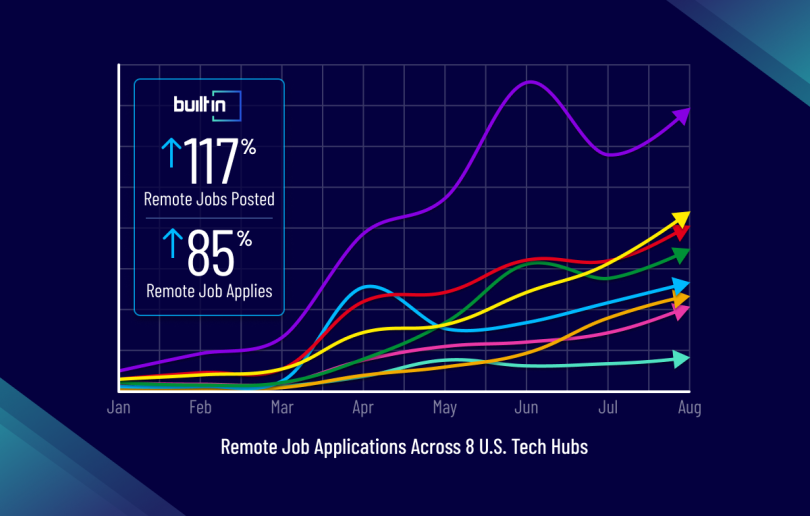
Six months ago, as tech offices around the country shuttered, a longstanding debate got kicked into overdrive: Should tech companies embrace remote work for the long haul?
Our internal data suggests the industry is moving in that direction. The number of remote jobs posted across the Built In network — from Chicago to Austin to San Francisco — has grown by 117 percent since May, and applications for remote jobs are up 85 percent.
Remote Tech Jobs are on the Rise
A recent survey of thousands of Built In users found that half are primarily looking for remote jobs, and 86 percent of site visitors in recent months report being open to remote work or relocation.
To keep up with this seismic shift, we’ve changed how our website functions; now, finding remote work is easier than ever before. When you look for jobs on our site, no matter where you’re based, you can search for positions accepting remote candidates, and browse thousands of results.

Distributed Teams Work Differently
Reporting on this evolution has taught us a lot about what makes teams tick. In March, companies were emulating in-office workflows through countless video calls and back-and-forth messages. But we soon learned why longtime distributed teams don’t work that way.
Distributed teams favor asynchronous communication, which allows for greater flexibility. Written documentation levels the playing field for employees juggling other responsibilities like childcare, and it keeps everyone on the same page when it comes to important details. Fewer video calls also mean fewer interruptions, which gives employees more time for deep work.
Setting clear expectations is another muscle that remote-first teams are flexing. Doing this may be as simple as creating an agenda for every one-on-one, or doing a daily standup meeting to troubleshoot upcoming tasks and potential blockers. Either way, be sure to reward results over around-the-clock availability — being online is not the same thing as working hard.
Whatever the future might hold for remote work, it’s important to remember that this great experiment is taking place at a challenging time. Effective workflows are important, yes, but don’t forget that your colleagues are people too.



